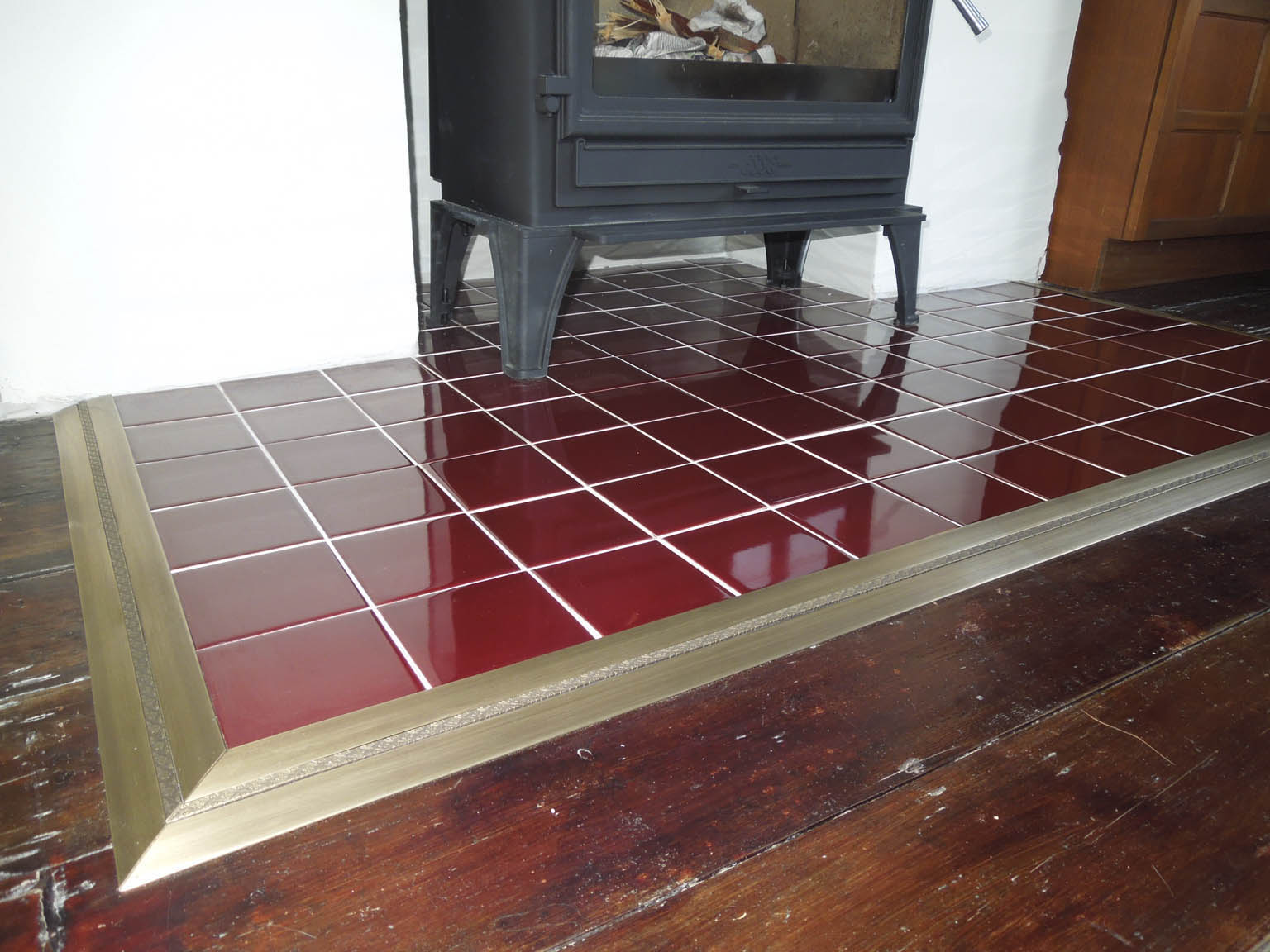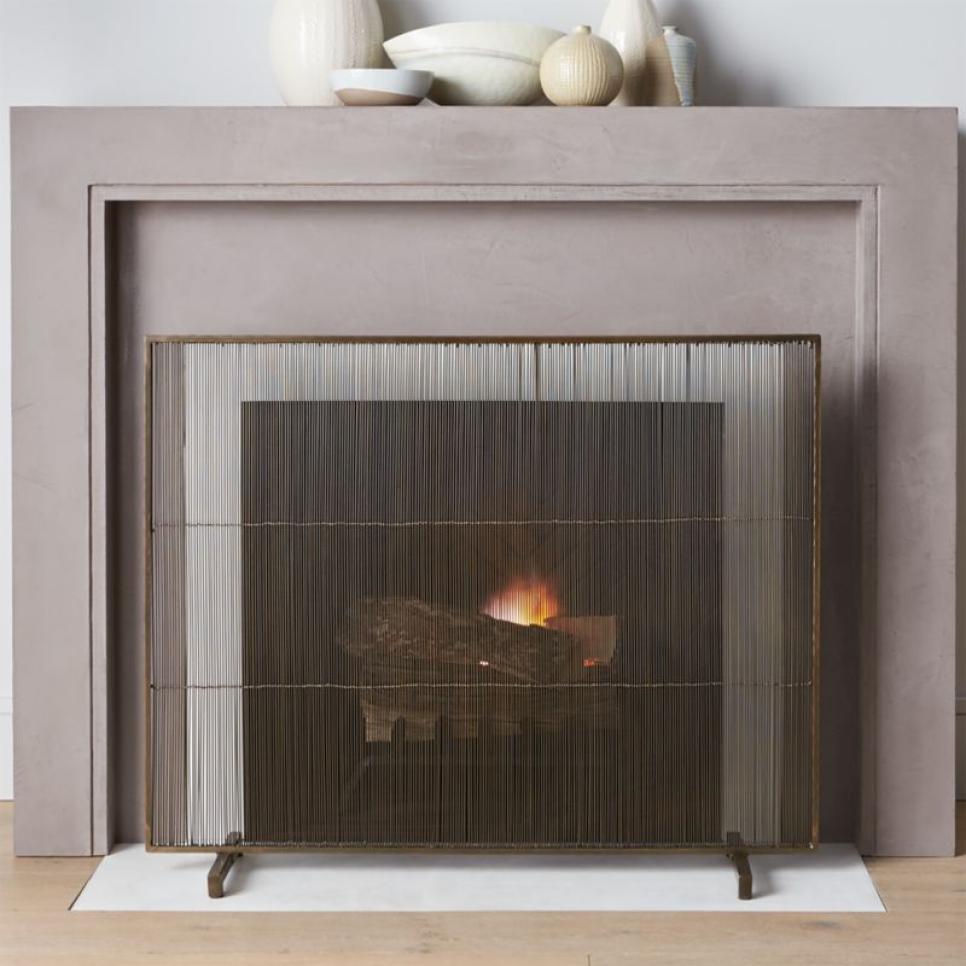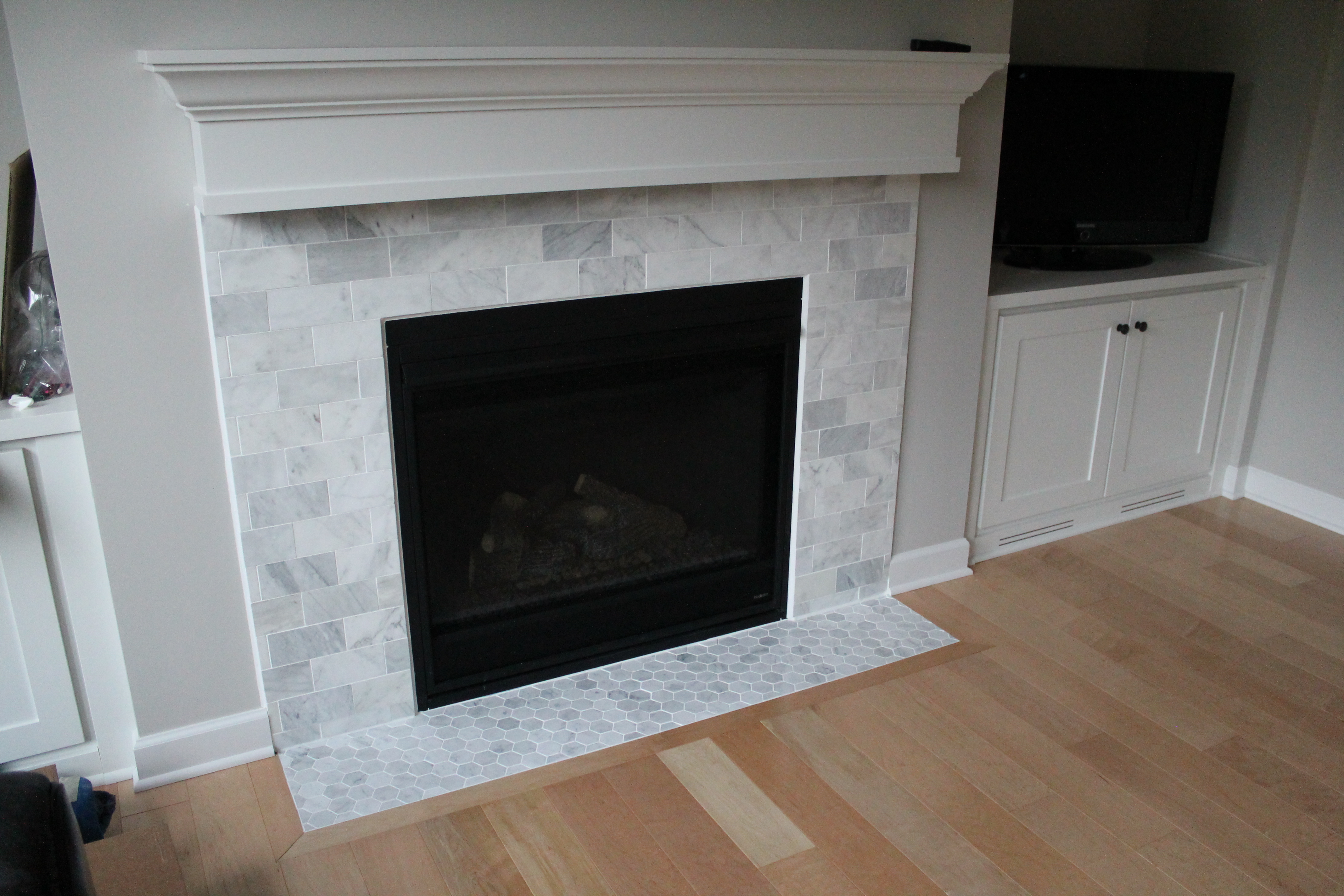Fireplace Surround Edging
Fireplace surround edging is an essential design element that frames the hearth and adds a polished, finished look to the entire fireplace. It acts as a transition between the fireplace and the wall, ensuring that the materials around the firebox are aesthetically cohesive and functional. Edging can be crafted from a wide range of materials, including stone, tile, metal, or wood, each offering its unique flair and durability. Choosing the right fireplace surround edging is crucial because it not only impacts the appearance of your fireplace but also plays a role in maintaining safety and durability over time. Whether you’re updating an existing fireplace or designing one from scratch, investing time in selecting the appropriate edging can make a dramatic difference in the overall look and feel of your room.

One of the most popular materials for fireplace surround edging is natural stone. Materials like granite, marble, slate, or limestone offer a timeless, elegant appeal that suits both traditional and contemporary settings. Stone edging provides a robust, heat-resistant barrier between the firebox and the surrounding wall, ensuring that the area remains safe and intact even after prolonged exposure to heat. The natural variations in color and texture found in stone make it a versatile option for many design styles. For example, a smooth marble edge can create a luxurious and sleek finish, perfect for modern or minimalist interiors, while rugged slate or stacked stone edging offers a more rustic, organic look that works well in country or cabin-style homes.

Tile is another versatile option for fireplace surround edging, offering endless design possibilities in terms of color, pattern, and finish. Ceramic, porcelain, and glass tiles are popular choices because they come in a variety of shapes and sizes, making it easy to create intricate designs or bold, statement-making borders. With tile, you can either match the surround to the room’s decor or use it as an opportunity to introduce a contrasting color or pattern that becomes the focal point of the room. Mosaic tiles, in particular, are a striking option for those who want to create a detailed, artistic edge around the fireplace. Additionally, tile is easy to clean and maintain, making it a practical choice for homeowners looking for a balance between style and functionality.

Wooden fireplace surround edging offers a warm, traditional feel, often seen in homes with classic or vintage decor. Custom wooden mantels and surrounds can be carved or crafted to fit any design aesthetic, from ornate Victorian styles to simple, shaker designs. However, it’s important to note that wood should only be used as an accent in areas that are not directly exposed to heat, as it is flammable and less heat-resistant than other materials. In modern fireplace designs, you might see a combination of wood and tile or metal used together, where wood forms the outer edge of the fireplace surround, adding warmth and texture to the overall design. If you choose to incorporate wood, proper heat shielding and installation techniques are necessary to ensure safety and compliance with building codes.

Metal fireplace surround edging is a popular choice in modern and industrial-style homes due to its sleek, minimalist appeal and durability. Metals like stainless steel, bronze, and iron can be used to create sharp, clean lines around the fireplace, giving the room a polished, contemporary look. Metal edging is also incredibly durable and heat-resistant, making it a safe option for framing the firebox. Additionally, metal finishes can be customized with various textures, patinas, or colors, allowing homeowners to achieve a unique, personalized look. For instance, brushed stainless steel offers a sleek, modern edge, while oil-rubbed bronze or blackened iron provides a more rustic or industrial feel, depending on the overall design of the space.

The installation process for fireplace surround edging also plays a critical role in the final outcome of the design. Proper measurement and alignment are key to ensuring that the edging fits seamlessly around the fireplace opening. In some cases, homeowners may choose to combine multiple materials, such as stone and metal, or tile and wood, to create a custom look. For example, using a thin metal strip to outline a marble surround adds an elegant detail that elevates the overall design. It’s important to ensure that the materials used for edging are installed in a way that allows for heat expansion and contraction, preventing cracks or warping over time. A professional installation is often recommended, especially when working with heavy or delicate materials like stone or glass.
Fireplace surround edging is more than just a functional element—it is a critical design feature that can transform the look of your entire fireplace and the room surrounding it. Whether you prefer the classic elegance of natural stone, the creative flexibility of tile, the warmth of wood, or the sleekness of metal, the right edging will tie your fireplace together and enhance your home’s overall aesthetic. Beyond its visual appeal, fireplace surround edging also provides necessary protection against heat and helps preserve the longevity of your fireplace. By carefully selecting and installing the best materials for your space, you can ensure that your fireplace becomes a stunning focal point that offers both style and safety for years to come.

Host a Trunk Show, Shop Fashion Jewelry & Accessories Stella & Dot Contemporary wood burning

How do I edge the tile around my fireplace hearth?

Pin on Fireplace & Surround

Carrara Marble Fireplace

Beautiful Astonishing Fireplace Makeover For Fall Home Decor

I love how the brick edges the front of the fireplace rather than just lining the reveal

if your space requires a big dose of subway tile magic, look no further than the chic

Herringbone pattern subway tile fireplace hearth and surround update. Herringbone fireplace

Related Posts:
- Do It Yourself Fireplace Surround
- Art Nouveau Fireplace Surround
- Crown Molding Fireplace Surround
- Art Deco Fireplace Surround
- Standard Fireplace Surround Dimensions
- Gas Log Fireplace Surrounds
- Rustic Fireplace Surround
- Pebble Stone Fireplace Surround
- Drywall Fireplace Surround
- Modern Fireplace Surround Designs
A fireplace surround edging is a decorative element that frames the opening of a fireplace, enhancing its visual appeal and style. It serves as a focal point in a room, drawing attention to the warm and inviting ambiance of a cozy fire. Fireplace surround edging can be made from a variety of materials, such as wood, stone, tile, or metal, each offering unique aesthetic qualities to complement different design preferences.
Benefits of Fireplace Surround Edging
One of the main benefits of fireplace surround edging is that it adds character and sophistication to any space. Whether you have a traditional or modern fireplace, the edging can be customized to suit your style and enhance the overall look of the room. Additionally, a well-designed fireplace surround edging can increase the value of your home and make it more appealing to potential buyers.
Another benefit of using a fireplace surround edging is that it can help protect the surrounding walls from heat and soot damage. The edging acts as a barrier between the fire and the walls, preventing them from becoming discolored or damaged over time. This can help extend the lifespan of your fireplace and maintain its appearance for years to come.
Furthermore, fireplace surround edging can also serve as a practical function by providing a surface for placing decorative objects or family photos. By adding shelves or mantels to the edging, you can create additional storage space or display areas that enhance the overall decor of the room.
Lastly, incorporating a fireplace surround edging into your home can create a cohesive look that ties together the design elements in your space. Whether you choose a sleek and minimalist design or an ornate and intricate style, the edging can help anchor the fireplace as the focal point of the room.
Pros and Cons of Fireplace Surround Edging
While there are many advantages to installing a fireplace surround edging, there are also some drawbacks to consider. One potential downside is that adding an edging to your fireplace can be an expensive investment, especially if you opt for high-end materials or custom designs. Additionally, installation may require professional expertise to ensure proper fit and functionality.
Another disadvantage of fireplace surround edging is that it may require regular maintenance to keep it looking its best. Depending on the material used, cleaning and upkeep may be necessary to prevent dust buildup, stains, or wear and tear over time. This added maintenance could be seen as an inconvenience for some homeowners.
On the positive side, one of the main pros of having a fireplace surround edging is that it allows you to personalize your space and express your unique style. With endless design options available, you can customize the edging to match your decor preferences and create a statement piece in your home. Whether you prefer sleek modern lines or intricate details, there is an edging design to suit every taste.
Additionally, incorporating a fireplace surround edging into your space can also improve energy efficiency by reducing heat loss through the fireplace opening. By sealing off gaps or cracks around the edges of the firebox with an edging material, you can optimize heat retention within your home and lower heating costs during colder months.
Installation Tips for Fireplace Surround Edging
When installing a fireplace surround edging in your home, there are several important factors to consider to ensure proper fit and functionality. First and foremost, it’s essential to measure carefully before purchasing any materials or components for your project. Take accurate measurements of the dimensions of your fireplace opening to determine how much edging material you will need.
Next, choose high-quality materials that are durable and appropriate for use near open flames. Depending on your design aesthetic and budget constraints, you can select from wood, stone, tile, metal, or other suitable options for your fireplace surround edging. Consider factors such as heat resistance, ease of maintenance, and compatibility with existing decor when making your selection.
Before beginning installation, make sure to prepare the surface around the fireplace opening by cleaning it thoroughly and removing any debris or obstructions that could hinder the process. If necessary, enlist the help of a professional contractor or installer who has experience working with fireplace surrounds to ensure proper alignment and secure attachment.
Finally, once the fireplace surround edging is installed correctly according to manufacturer guidelines or industry standards, take time to inspect and maintain it regularly to preserve its appearance and functionality over time. Follow recommended care instructions provided by the manufacturer or consult with an expert if issues arise with cleaning or maintenance tasks.
Common Mistakes To Avoid
One common mistake homeowners make when installing a fireplace surround edging is overlooking proper measurements before purchasing materials. Inaccurate dimensions can lead to costly mistakes during installation if components do not fit correctly around the firebox opening.
Another mistake to avoid is neglecting maintenance tasks after installation is complete. Regular cleaning and upkeep are essential for preserving the appearance and function of your fireplace surround edging over time. Failure to maintain it properly could result in damage or deterioration that requires costly repairs down the line.
What are some popular materials for fireplace surround edgings?
Some popular materials for fireplace surround edgings include wood, stone (such as marble or granite), tile (such as ceramic or porcelain), metal (such as wrought iron), or composite materials (such as engineered stone). Each material offers unique aesthetic qualities that can complement different design styles.
Can I install a fireplace surround edging myself?
While some homeowners may have the DIY skills necessary for installing a simple fireplace surround edging kit, more complex designs may require professional expertise for proper fitment and function. It’s essential to consider factors such as safety precautions around open flames before attempting installation on your own.
How much does it cost to install a fireplace surround edging?
The cost of installing a fireplace surround edging varies depending on factors such as material choice, design complexity, and labor expenses involved in customization or installation services. It’s recommended to obtain multiple quotes from reputable contractors before making a decision.
Are there any safety concerns associated with installing a new fireplace surround?
When installing or modifying any element near an open flame source like a firebox, it’s crucial to follow safety guidelines set forth by local building codes and regulations specific related safety precautions when using certain materials near heat sources.
Whether you choose a simple design or a more elaborate style, fireplace surround edging can elevate the look of your fireplace and create a warm and inviting atmosphere in your home. By carefully considering the pros and cons, selecting the right materials, and following proper installation techniques, you can enjoy the many benefits that a fireplace surround edging has to offer for years to come.